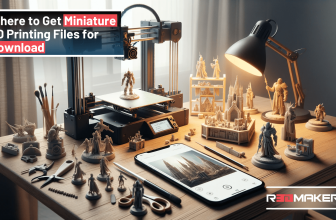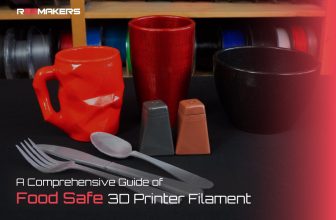Understanding 3D Printer Filament: A Comprehensive Guide

The magic of 3D printing lies not just in the printers themselves but also in the materials they use. It’s akin to the bond between a writer and the ink, or a painter and their palette of colors. In 3D printing, the artist’s color palette comes in the form of “3D printer filament“. With numerous 3D printer filament types available in the market, it’s essential to understand the differences to choose the best one for your specific needs.
In the realm of technology, 3D printing stands as a testament to human ingenuity, bridging the gap between digital designs and tangible reality. Much like how a sculptor carefully chooses their medium—be it clay, marble, or bronze—a 3D printing enthusiast must select the appropriate filament.
This choice determines not only the texture and appearance of the final piece but also its strength, flexibility, and durability. Just as different stories demand varied writing styles or canvases call for distinct brush strokes, different projects necessitate unique 3D printer filament types. As a consequence, being well-versed with these materials becomes pivotal in the 3D printing journey.
An Introduction to 3D Printer Filament
The term “3D printer filament” refers to the thermoplastic feedstock used for fused deposition modeling 3D printers. Imagine it as the ink of a 3D printer. These filaments come in spools and are melted and then extruded through the printer’s nozzle to create three-dimensional objects layer by layer.

Delving into Types of Filament
With 3D printing’s surge in popularity, the variety of available 3D printing filament types has also expanded. From materials suitable for decorative pieces to those designed for functional parts, there’s a filament for every need. Here are some of the most commonly used types of 3D printer filament:
PLA (Polylactic Acid): A popular choice, especially for beginners. It’s biodegradable, derived from renewable sources like corn starch, and emits a pleasant, sweet smell when heated. Suitable for a wide range of printing applications, PLA is known for its ease of use and environmental friendliness.
ABS (Acrylonitrile Butadiene Styrene): A strong and durable filament type that’s perfect for creating objects that need to withstand wear and tear. It can be a bit tricky to work with due to its higher printing temperature and potential warping, but its strength and finish make the effort worthwhile.
PETG (Polyethylene Terephthalate Glycol-modified): This filament combines the best of both PLA and ABS. It’s as easy to use as PLA while offering the strength and flexibility of ABS. PETG is resistant to water and many chemicals, making it ideal for various practical applications.
TPU (Thermoplastic Polyurethane): For those looking to print flexible objects, TPU is the go-to choice. It’s a flexible, rubber-like material, ideal for creating parts like phone cases, shoe soles, or wearable items.
These are just a few examples, and the list of types of filament continues to grow as the industry evolves.

How to Choose the Best 3D Printer Filament
When determining the best 3D printer filament for a particular project, several factors come into play:
Purpose of the Print: Are you creating a decorative piece or a functional part? A choice like PLA might be ideal for decorative items, while ABS or PETG would be better suited for functional components.
Printer Compatibility: Not all 3D printer filament types are compatible with every 3D printer. Ensure your printer can handle the filament type you’re considering, especially in terms of the required printing temperature.
Environmental Conditions: Some filaments, like ABS, can warp under specific conditions. If you’re printing in an area with fluctuating temperatures, you might want to consider filaments that are less prone to such issues.
Post-Processing: If you plan to sand, drill, or otherwise post-process your print, some materials are better suited than others. For example, ABS sands smoothly, while PLA might be more prone to chipping.
Cost: Finally, consider the cost. Some specialty filaments can be quite pricey, so it’s essential to balance the need for specific properties with your budget.
Conclusion
The realm of 3D printing is as vast and varied as the universe of traditional printing. By understanding the different 3D printing filament types, you can harness the full potential of your 3D printer and bring your creative visions to life.
Just as the artist selects the right shade of color for their masterpiece, choosing the right filament can make all the difference in your 3D printing endeavors. Whether you’re a novice or a seasoned pro, understanding and experimenting with the diverse types of 3D printer filament will undoubtedly enhance your printing journey.
In today’s rapidly evolving technological landscape, 3D printing stands out as a beacon of innovation. The choice of filament becomes not just a matter of material, but a representation of the user’s intent, vision, and dedication to craftsmanship.
Different filament types offer unique characteristics, textures, and finishes, allowing for an extensive palette of creative possibilities. This makes the journey of 3D printing more than a mere process; it transforms it into an art form.
Just as a sculptor carefully chooses their medium, be it clay, marble, or bronze, a 3D printing enthusiast’s filament choice serves as a testament to their vision and the desired outcome. Embracing the myriad of available filament options opens up a world of possibilities, pushing the boundaries of what can be achieved in this dynamic field.








